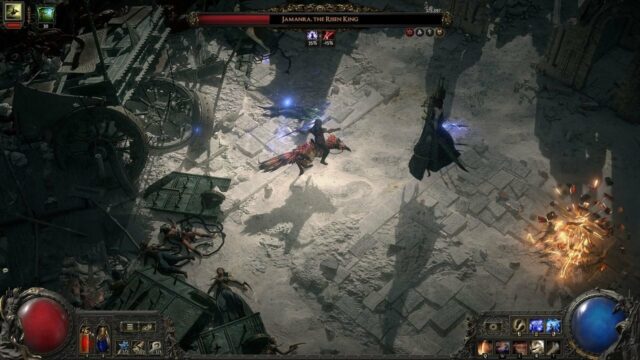The Art of Minion Builds in poe 2
The Art of Minion Builds in poe 2
Path of Exile 2 has brought a renewed focus to minion-based builds, offering players the opportunity to command armies of undead, summoned creatures, and elemental allies to dominate the battlefield. While summoner playstyles existed in the original game, the sequel refines and expands the system, giving minion builds new depth, flexibility, and strategic complexity. Mastering minion mechanics has become both a creative challenge and a powerful way to tackle the ever-increasing threats of Wraeclast.
At the heart of minion builds is minion customization. Players can now fine-tune their summoned creatures in ways that directly influence combat effectiveness. Skills that summon minions often have branching paths or enhancements that allow for specialization—whether creating durable tanks to absorb damage, high-damage attackers, or utility minions that provide crowd control or buffs. This flexibility ensures that each summoner build can be highly personalized, reflecting the player’s strategy and preferred combat style.
The passive skill tree and its interaction with minions have also been expanded. Nodes now enhance specific aspects of minions, such as their attack speed, damage type, or survivability. Certain passives even grant unique effects, like allowing minions to explode on death or to transfer elemental status effects to enemies. This integration encourages careful planning, as investing in the right nodes can transform a basic army of skeletons into a devastating force capable of tackling high-level maps and bosses.
Minion synergy with player skills has been reimagined as well. Many active skills now support or enhance minion effectiveness, creating a loop where player actions directly impact minion performance. For example, casting an elemental spell might empower all minions with bonus elemental damage, or using a defensive skill could trigger minion taunts to protect the player. These interactions deepen tactical gameplay, making summoner builds feel dynamic and responsive rather than static or passive.
Resource management plays a crucial role in minion builds. Unlike direct damage builds that focus on health and mana, summoners must balance minion limits, summon durations, and resource costs. Path of Exile 2 introduces mechanics that allow players to extend minion lifespans, summon additional creatures, or refresh charges mid-combat. Strategic use of these mechanics can make the difference between overwhelming success and catastrophic failure in challenging encounters.
Endgame content further rewards mastery of minion mechanics. High-level maps, bosses, and league challenges often feature mechanics designed to test control over summoned allies. Players who optimize positioning, timing, and minion composition can exploit these challenges to their advantage, while those who neglect minion management may find their armies quickly overwhelmed. This ensures that minion builds remain engaging and require both strategy and skill to excel.
Path of Exile 2 encourages creativity and experimentation with minion builds. With countless combinations of minion types, skill gems, support gems, and passives, no two summoner characters need play the same way. Players can blend minion strategies with hybrid approaches, mixing damage, utility, and survivability to craft a unique army tailored to their goals.
Minion builds in poe 2 currency sale offer a rich and rewarding avenue for strategic gameplay. By emphasizing customization, synergy, and tactical management, the game transforms the act of summoning into a central pillar of combat strategy. For players willing to master their armies, minion builds provide both a powerful tool and a deeply satisfying expression of creativity in the treacherous world of Wraeclast.
Sorry, there were no replies found.
Log in to reply.


